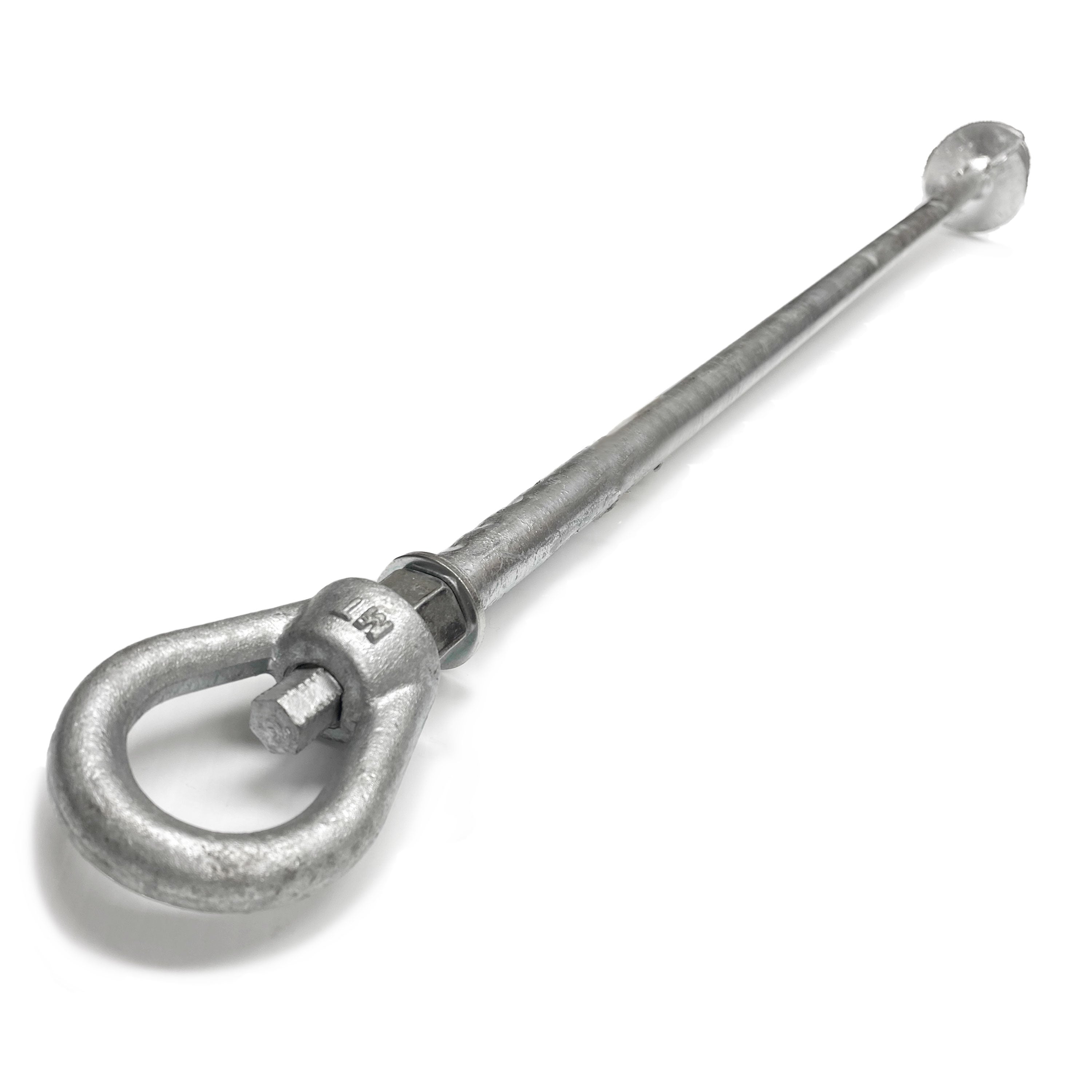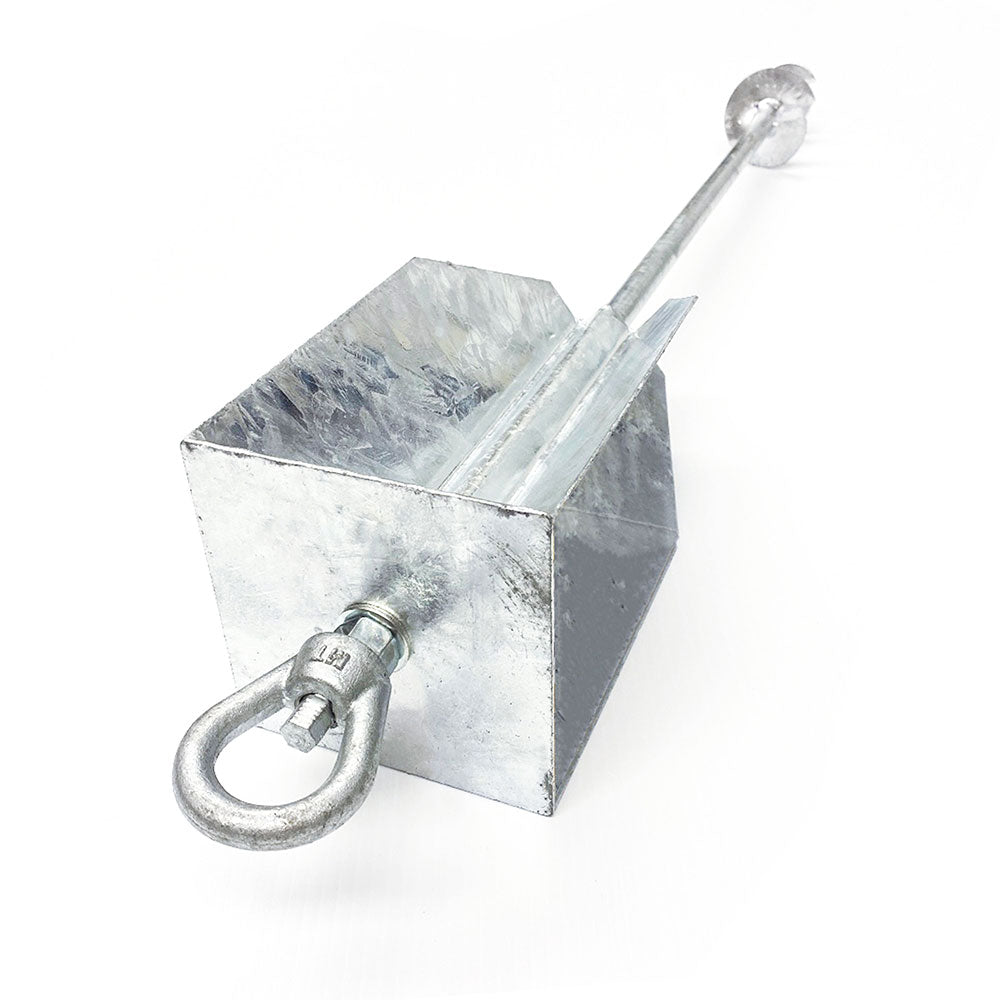The Benefits of a Strong Ground Anchor for Enhanced Stability
The Benefits of a Strong Ground Anchor for Enhanced Stability
Blog Article
Explore the Different Types of Ground Anchor for Your Next Task
From auger anchors, which stand out in diverse soil problems, to risk anchors made for short-lived installations, the options are many. Additionally, concrete and screw anchors present one-of-a-kind benefits in specific situations, while deadman anchors are customized for applications calling for resistance to lateral pressures.

Auger Anchors
Auger anchors are a popular option in various building and construction and landscaping tasks due to their one-of-a-kind design and reliable anchoring capacities. These anchors contain a helical screw-like shaft that is driven into the ground, permitting a protected and secure hold. The spiral design promotes simple setup and makes best use of resistance against lateral pressures, making auger supports specifically efficient in applications such as secure fencing, short-term frameworks, and disintegration control.
The installation procedure of auger supports is reasonably simple. Auger anchors can be conveniently gotten rid of and reused, which adds to their cost-effectiveness and sustainability.
One of the significant advantages of auger anchors is their ability to disperse tons evenly across the surrounding dirt, minimizing the risk of dirt disturbance and decreasing ecological effect. Furthermore, they are less at risk to heaving or loosening up gradually compared to standard securing techniques. Auger anchors are an exceptional option for projects calling for trusted and sturdy anchoring services.

Risk Anchors
When it involves securing structures in a variety of outside applications, stake supports provide a simple and trusted service. These anchors are usually constructed from resilient materials such as steel or light weight aluminum, made to stand up to ecological stress and anxieties while supplying optimal stability. Their easy design enables for quick installation, making them an excellent selection for long-term or momentary anchoring requirements.
Stake anchors are especially beneficial in protecting camping tents, canopies, and other lightweight frameworks against wind and weather. They operate by being driven right into the ground at an angle, creating a solid hold that stands up to pull-out forces - Ground Anchor. The performance of risk anchors depends on numerous factors, consisting of soil kind, moisture material, and the angle of installment
For included safety, many risk supports include attachment factors for ropes or straps, allowing for stress changes as necessary. In applications such as landscape design or building and construction, they can successfully stabilize devices or frameworks on irregular terrain. In general, risk supports offer a economical and versatile option for protecting various outside installations, making them a recommended selection for specialists and DIY lovers alike.
Concrete Anchors
Concrete supports give a durable service for securing structures to concrete surfaces, making sure security and safety and security in different applications. These anchors are vital for jobs ranging from residential buildings to massive industrial installments. They can be found in different kinds, including growth anchors, adhesive supports, and undercut supports, each designed for details lots needs and ecological conditions.
When mounted,Growth anchors rely on mechanical systems to grip the concrete. They are suitable for tool to durable applications. Adhesive anchors use high-strength epoxy or resin to bond the support to the concrete, using remarkable load-bearing capabilities, especially in broken concrete circumstances. Undercut anchors create an unique form within the concrete, offering exceptional holding power, specifically in applications where tensile tons are widespread.
Picking the ideal concrete support entails taking into consideration aspects such as the weight of the load, the problem of the concrete, and ecological problems. Proper setup techniques are essential to ensure optimum performance and integrity. When implemented properly, concrete supports dramatically enhance the structural integrity of numerous projects, making them vital in contemporary construction practices. Comprehending the particular requirements of your job will assist in choosing the appropriate kind of concrete anchor for the task.
Screw Anchors

Screw supports are a functional fastening service that can be properly utilized in a range of applications where typical concrete supports might not be sufficient. These anchors are composed of a helical layout that allows them to be conveniently driven right into the ground, making them ideal for usage in soil and various other substrates. Their distinct structure supplies superb holding power and resistance Discover More to pull-out pressures, making them ideal for many jobs, from landscape design to architectural support.
Among the main benefits of screw supports is their ease of installment. They call for marginal devices and can often be installed without the demand for excavation, which saves both time and labor prices. Additionally, screw supports can be gotten rid of and reused, supplying a lasting option for momentary applications.
Screw anchors are particularly valuable in areas where dirt conditions are challenging, such as sandy or loose dirts. Their capacity to be installed at differing depths permits customization based on certain task demands. Overall, screw supports supply a reliable and efficient securing approach, making them a superb read this choice for designers and contractors seeking effective services for their jobs.
Deadman Anchors
Deadman anchors act as a robust service for stabilizing structures in challenging problems, specifically where typical securing techniques may drop short. These anchors include huge, heavy things hidden underground, which develop resistance against lateral pressures. The layout normally involves a horizontal component, such as a block of concrete or a metal plate, buried in the soil, to which cables or straps are attached.
The performance of deadman anchors depends on their capability to disperse tons over a bigger location, minimizing the risk of failing in unpredictable dirt problems. They are specifically advantageous in applications such as maintaining walls, short-lived frameworks, and slope stabilization, where dirt motion can compromise the honesty of the framework.
Installment of deadman anchors needs careful preparation to ensure they are put at the appropriate deepness and positioning, optimizing their load-bearing capability. While they may require even more labor and product than lightweight anchors, their integrity in adverse problems makes them important for lasting projects. Deadman anchors are flexible and can be adapted to numerous applications, making them a best selection for designers encountering special difficulties in their tasks.
Conclusion
In summary, selecting the proper kind of ground support is crucial for making sure security and protection in numerous tasks. Auger supports stand out in varied soil problems, while risk supports fit short-lived applications. For concrete surfaces, development and sticky anchors give trustworthy options, and screw anchors provide versatility in difficult terrains. Deadman anchors are specifically reliable in standing up to lateral pressures for maintaining walls. Careful consideration of these explanation choices will boost job results and structural honesty.
Furthermore, concrete and screw supports existing unique advantages in particular situations, while deadman supports are customized for applications calling for resistance to lateral forces - Ground Anchor.Auger anchors are a prominent option in different building and construction and landscape design tasks due to their unique design and effective securing abilities. They come in different types, including growth supports, sticky supports, and undercut anchors, each created for details tons demands and environmental problems
Sticky anchors utilize high-strength epoxy or resin to bond the anchor to the concrete, supplying exceptional load-bearing capabilities, particularly in fractured concrete situations. In general, screw anchors provide a trustworthy and efficient anchoring method, making them a superb choice for professionals and designers looking for effective remedies for their projects.
Report this page